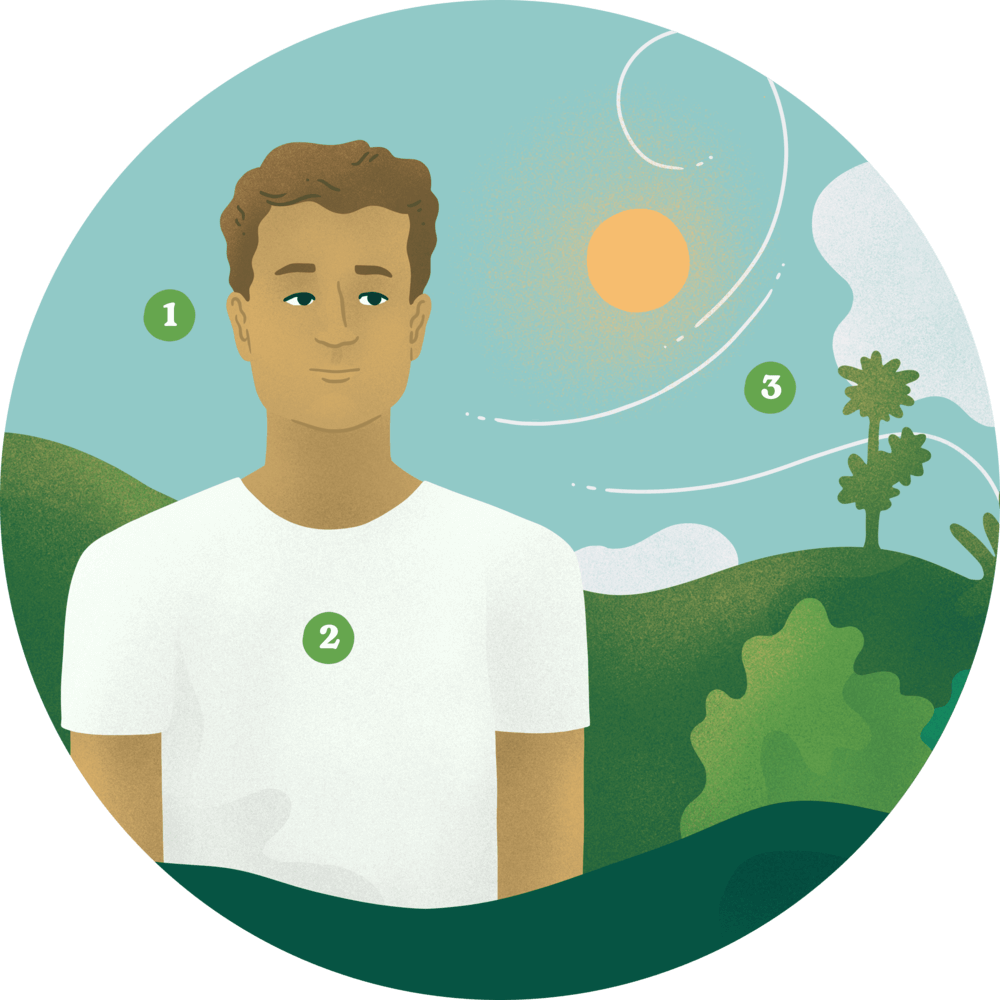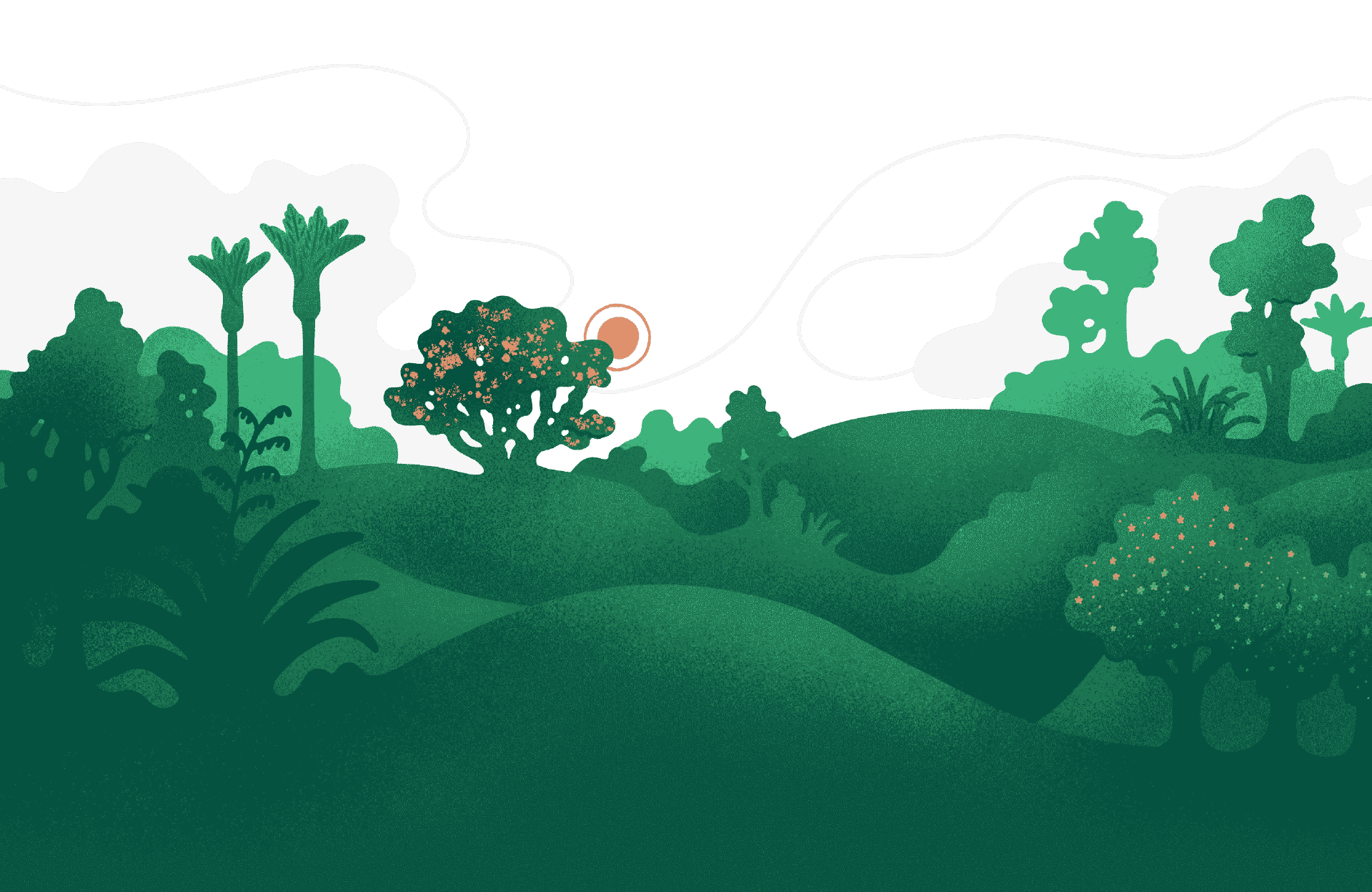
Identifying Signals
Some feelings in your body are useful signs to indicate that you’re becoming distressed. If picked up on quickly, they can signal that it is time to use a tool to improve your wellbeing. For example, if you notice your heart beating rapidly then you might try Deep Breathing or a meditation technique to calm down.

What are the signs that I’m starting to feel distressed?
Some feelings in your body are useful signs to indicate that you’re becoming distressed. If picked up quickly, they can signal that it is time to use a tool to improve your wellbeing. For example, if you notice your heart beating rapidly then you might try Deep Breathing or a meditation technique to calm down.
How does it help?
Through using this tool, you explore different areas of the body where you commonly feel physical sensations when starting to feel distressed. This helps you to become aware of when these body sensations are happening, so you can use the feelings as signs to either react appropriately, use a tool to improve your wellbeing, or simply engage in self-care. You’ll also be given some insights, which explain why the sensations occur.

FAQs
What is wellbeing?
Wellbeing is defined in different ways by different people. You might see it as your life force, overall level of holistic health, or how comfortable, healthy and happy you currently are. Wellbeing exists on a continuum from low to high which we can move up and down.
Why do I only choose 1-3 signals?
Good question. Our mind and body are interconnected, so when we feel emotions we also experience physical sensations. For example, “butterflies in your stomach” when you’re nervous or tense muscles when you’re stressed.
It’s more effective to become aware of a few of the most noticeable signs you experience. Rather than trying to look out for all of these signs, we’d encourage you to calmly notice 1-3 signs.
This is because, with practice, you will become more aware, meaning you can spot your signs even when they aren’t that obvious and you’re busy with other things. The earlier you spot them and use a tool, the less likely that distress or feeling overwhelmed will take over. Eventually, you will notice signs and do something about how you’re feeling without even having to think about it.
How is wellbeing affected?
Your everyday level of wellbeing goes up and down based on things that are happening. This can be due to what you are doing, what you’re thinking, your physical health, how things are going with your relationships and your sense of purpose and meaning in life.
Learning to recognise the signs that your wellbeing is changing, especially if it’s lowering, is important as these signal that there is something to attend to in order to reinvigorate your wellbeing.

Try Identifying Signals now
Small Steps Toolbox
These tools have been developed to help with feelings of anxiety, stress, or low mood. Each tool only takes a few minutes. Health and wellbeing is an ongoing journey - so try them out and see what works for you.
Te Whakatau i te Wairua
Mā tēnei tūmahi ka kite koe i te pānga o ō mahi ki ō kare ā-roto. Kei konei hoki ētahi tūmahi hei hiki ake i ō kare ā-roto.
Te Mātai Aronui
I tēnei tūmahi mātai aronui, ka arahina koe e tētahi oro māmā ki te āta rapu atu i ngā āhuatanga rerekē o ētahi whakaahua, ā, kia pērā anō tō titiro ki tō ao.
Te Whakahou i ngā Whakaaro
Mā tēnei tūmahi, hei tautohu ngā tauira hua-kore e whāia ana e ō whakaaro me ō whakapono, ā, ki te whakahoungia ērā āhuatanga, i roto i te wā, ka pai ake ai ō kare ā-roto, ka pai ai hoki ō whakatau hei hiki anō i tō hauora.
Te Āta Whakahā
He tikanga whakaataata tēnei, e āta whakahā ai te tangata, ki roto, ki waho anō kia tau te mauri, kia whakatā hoki te wairua. E arahina ana tēnei tūmahi e tētahi ata tāoreore e ngongo ana, e tuku ana hoki i te hau.
Te Whakarongo Pīkari
Mā tēnei pūkenga, ka āta arotahi koe ki ngā kupu a te tangata, kaua ki ētahi wāhi anake o āna kōrero. I tēnei tūmahi, ka whakangungua koe ki te whakarongo, ki te āta mōhio hoki i ngā wā e aro atu ana koe ki wāhi kē.
